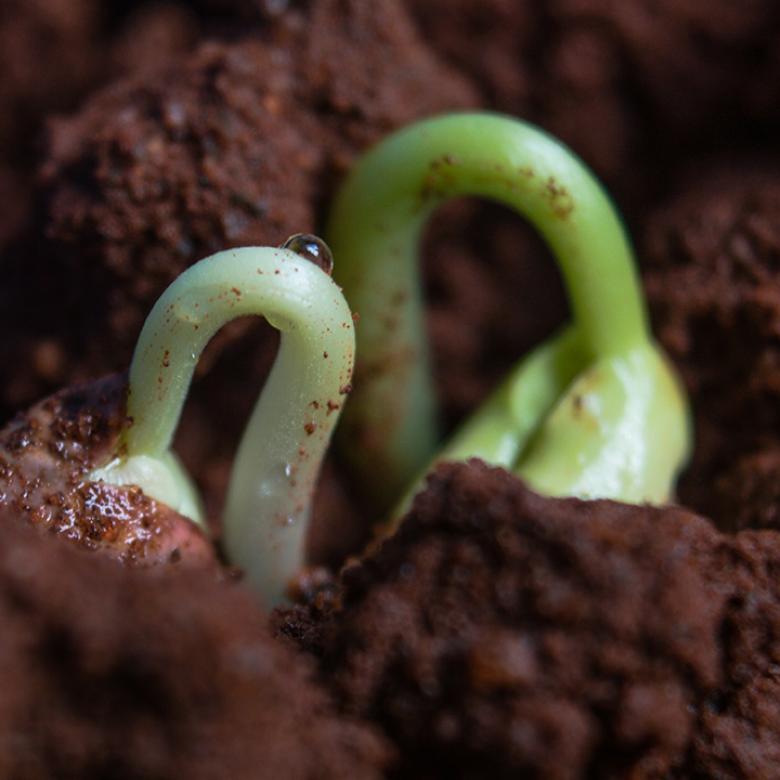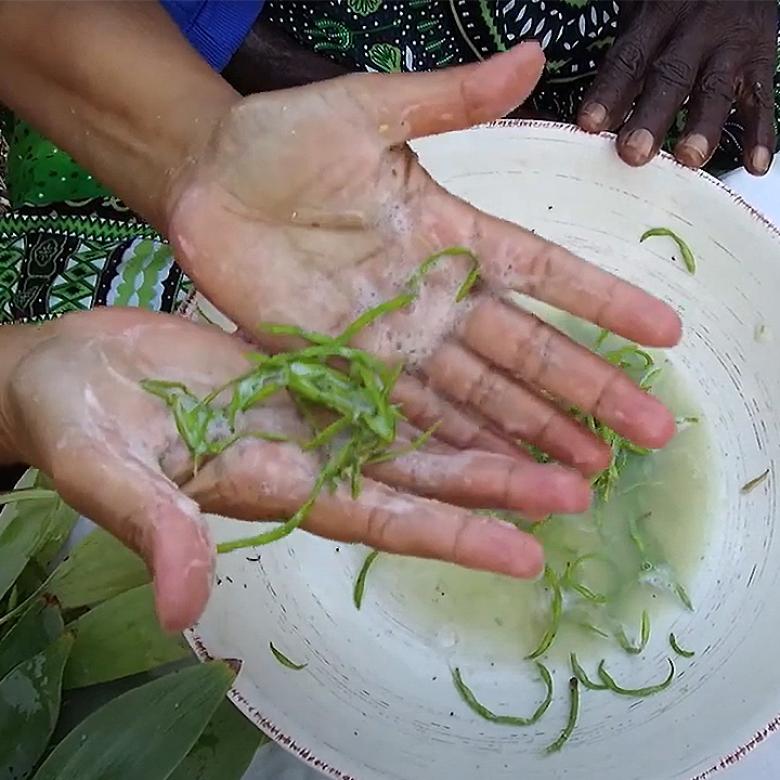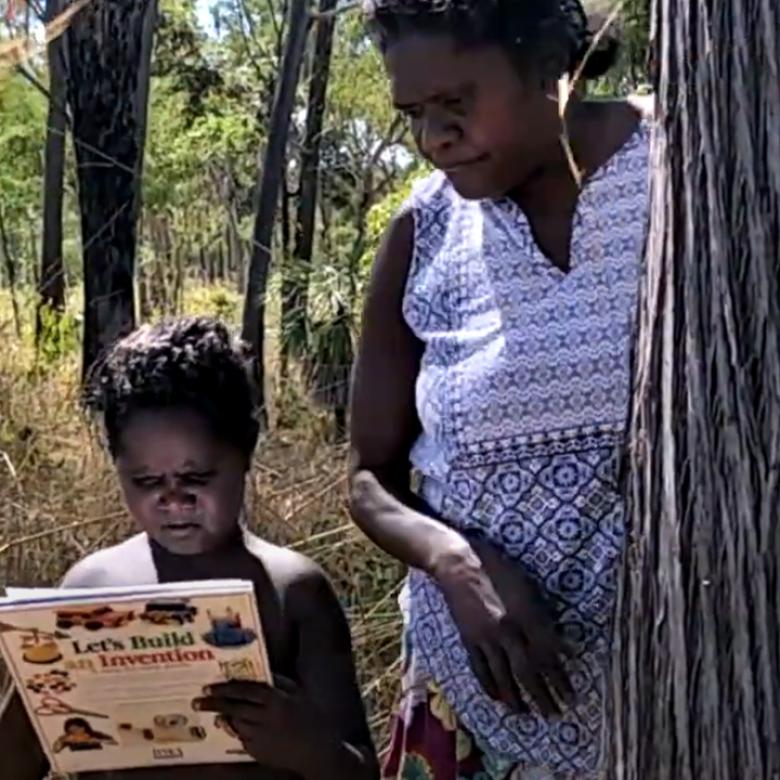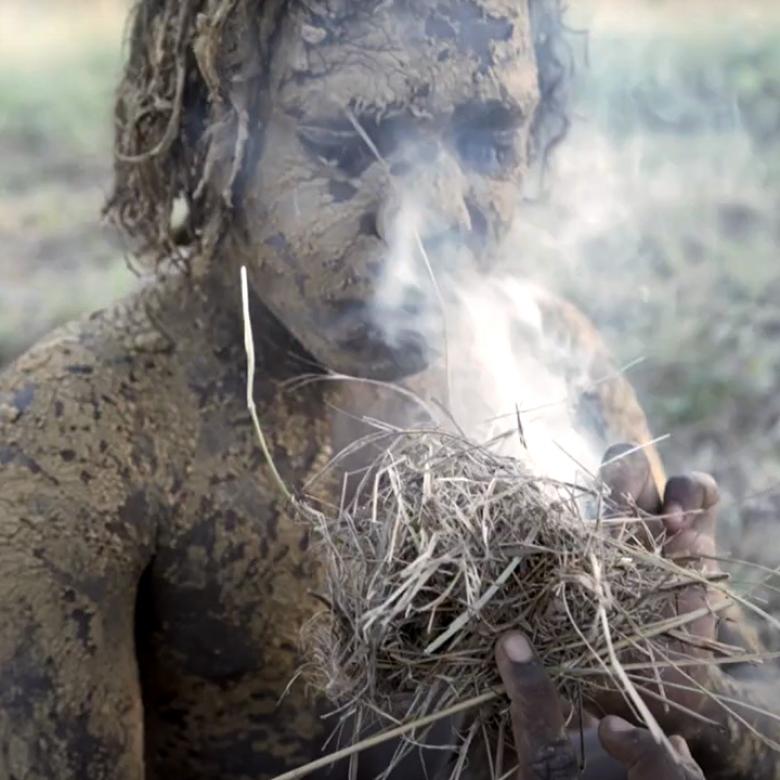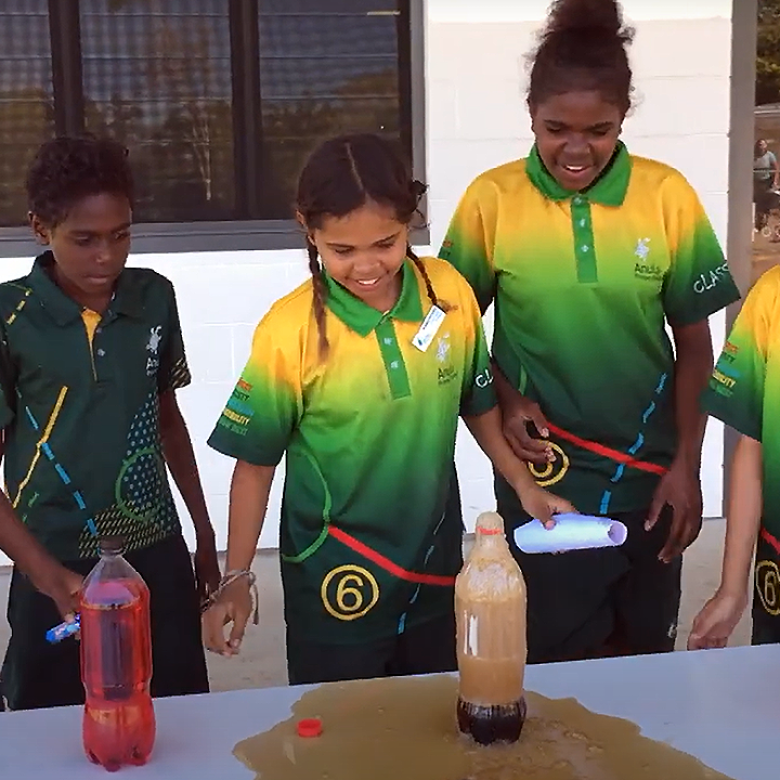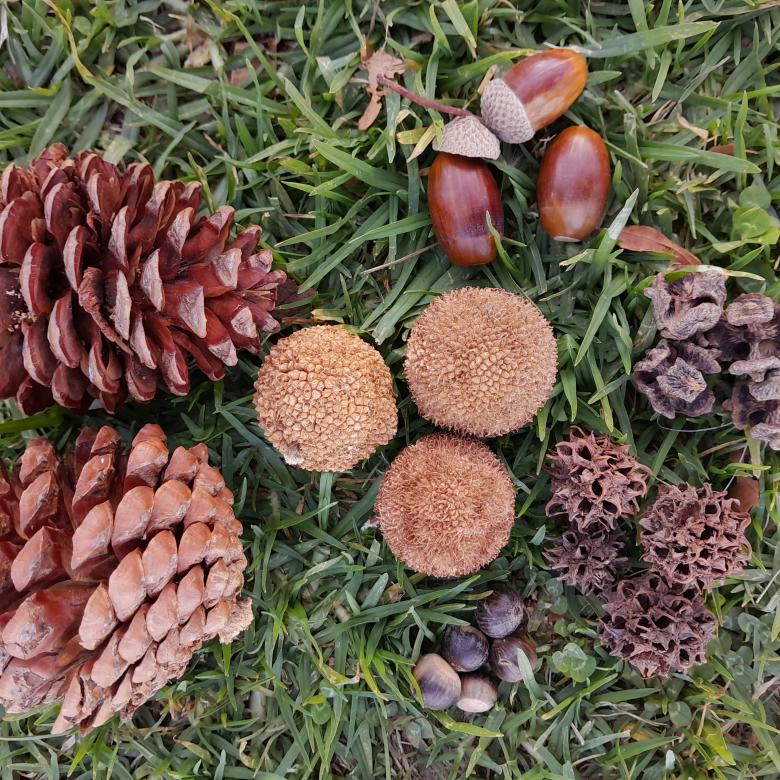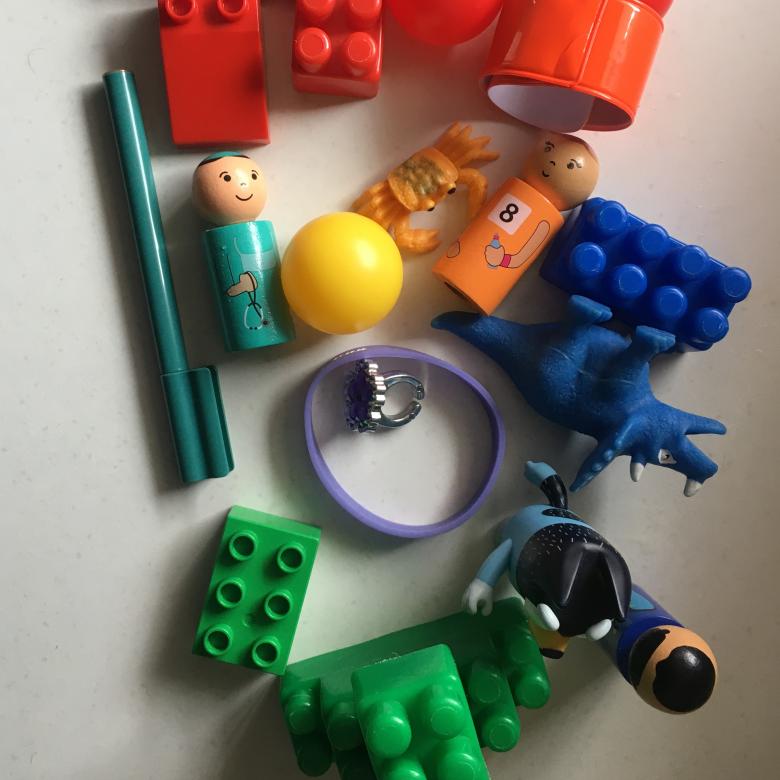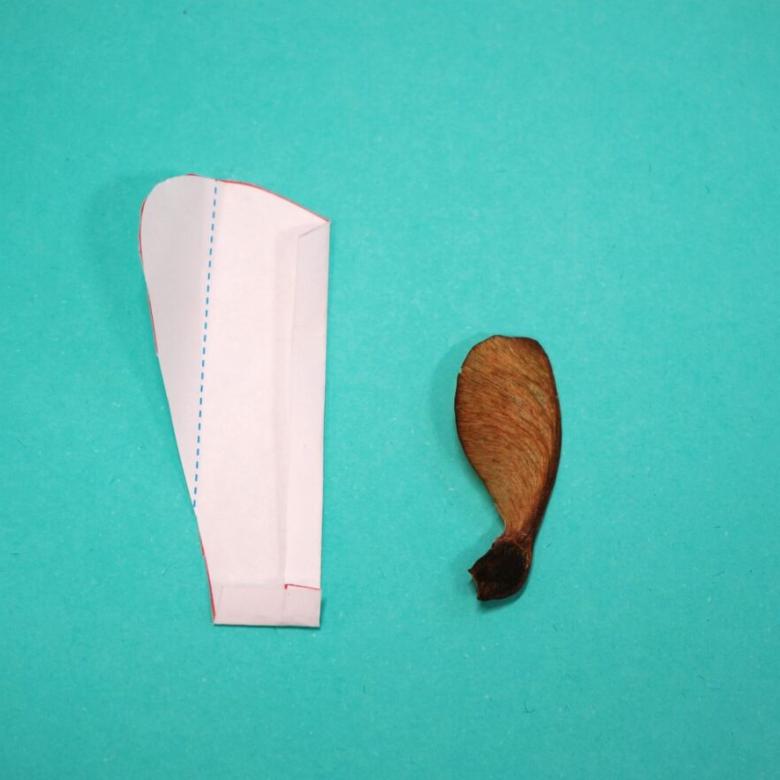Learn about legumes
Hear from Audrey McInnerney, Wiradjuri woman and molecular plant scientist, on the science of legumes.
[Image appears of text on a black screen: The following video made by Audrey McInnerney contains Wiradjuri language, prepared for Questacon’s Science in First Languages Project as part of the International Year of Indigenous Languages]
[Music plays and the image changes to show text on the screen: Science In First Language]
[Image moves along to show a medium view of Audrey talking and walking along a path towards the camera, and then image shows Audrey walking out of view]
Audrey: (Spoken in Wiradjuri)
Hi. My name is Audrey. I'm a Wiradjuri woman and a molecular plant scientist. And today I want to yarn about my research.
[Music plays and images flash through showing Audrey working in a lab, opening a bottle, examining
the contents, injecting liquid into test tubes, and then Audrey moving around the lab]
[Image changes to show a medium view of Audrey talking as she walks towards the camera]
(Unidentified), today I want to tell you a story. And this story starts with nitrogen. Now nitrogen is super important for plant growth. Think of it like a plant building block. Because nitrogen is so important, sometimes farmers have to add (unidentified) a lot of synthetic nitrogen fertiliser to keep their plants (unidentified.)
[Image moves though to show Audrey bending over to point at plants, a view of the plants, and then Audrey’s face as she continues to talk to the camera]
Now (unidentified) means the plants to be healthy and green and strong. Without these nitrogen fertilisers, farmers wouldn't be able to produce the (unidentified), the abundance of food that they do. And many people could go hungry.
[Image moves though to show Audrey talking to the camera in a garden, turning away and walking behind a flower sculpture and peeking through a face hole of the flower’s centre as she talks]
This is where legumes come in. Now legumes are a type of flowering plant that includes things like peas, beans, chickpeas and lentils.
[Image changes to show a medium view of Audrey talking to the camera]
What you might not know is that 90% of native Australian flowering plants are actually legumes. Now what makes legumes really cool is the symbiosis that they form with the bacteria in the soil called Rhizobium, and that leads to the formation of nodules. Now inside these nodules, the bacteria, the rhizobia are actually living and they're doing a process that we call biological nitrogen fixation.
This is essentially where bacteria take nitrogen from the atmosphere that plants can't use, and they turn it into forms of nitrogen like ammonia that the plant can use. So it's a reciprocal relationship. The bacteria gives the plants nitrogen and in exchange the plants give the bacteria (unidentified) shelter and food.
[Image changes to show a medium view of Audrey talking to the camera as she walks along a path towards the camera]
Now nodulation is a pretty cool way for legumes to get their own nitrogen, but it does take a lot of energy and resources, so the legumes have to make sure they can really balance their resources and their energy, and make sure they make the perfect amount of nodules for the environment that they're in. If there's already plenty of nitrogen in the manang, the soil, it doesn't make sense to make a lot of nodules. So there's actually a genetic pathway to (unidentified) to immediately stop nodulation when nitrogen is around.
[Image changes to show a fast motion view of Audrey in a lab injecting small test tubes with a liquid]
My research is trying to (unidentified) to understand this genetic pathway and other genetic pathways that allow plants to respond to their environments.
[Image changes to show medium views of Audrey talking to the camera as she walks along a path towards the camera]
In Western science, we're really taught to think about these genetic systems in a linear way to simplify them and make them seem easier to (unidentified) to understand. The problem with this is that biological systems are never really linear. So at the end of the day, these linear systems are never going to be quite right. To help overcome the limitations associated with this, I try to remember Wiradjuri ways of thinking which are more circular and non-linear. And there's some things in Wiradjuri that exist in the past, the present and the future together or (unidentified) at one in the same time.
For me this is a really good way to think about genetics and it is far more flexible than a linear way of thinking. I hope that (unidentified) in time will know more about legumes, and we can find opportunities to include them in agriculture and protect (unidentified) through lessening our reliance on synthetic nitrogen fertilisers.
I also hope that in the future we have more indigenous people in STEM sharing their perspectives. (Unidentified), thank you.
[Music plays and the image changes to show text on the screen: Science In First Language]
[Image changes to show the Australian Government and Questacon logos on a black screen and text appears: Thanks to The Wirradjuri Study Centre/ReganR8, Filming was done on Yuggera/Turrubul and Jarowair country,
[Image changes to show new text on a black screen: Thanks to Audrey McInnerney, Scarlett McInnerney, The Interactive Legumes Research Group at UQI]
Some information on this page is cultural material provided by First Nations people and remains their Indigenous Cultural and Intellectual Property (ICIP). This material may be removed or amended as needed.

